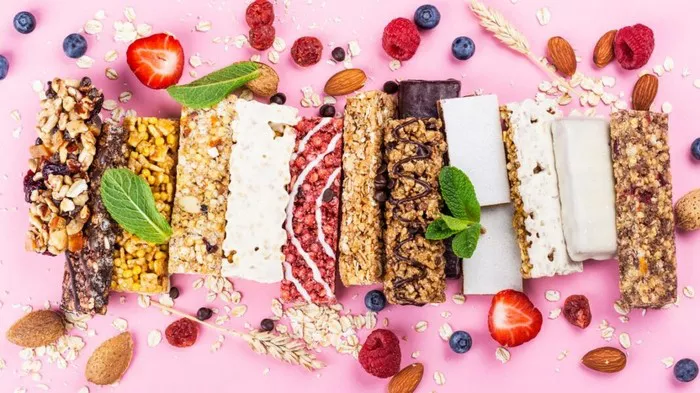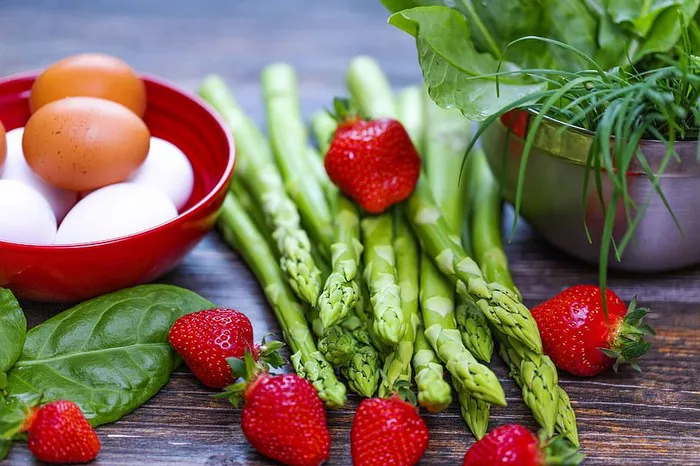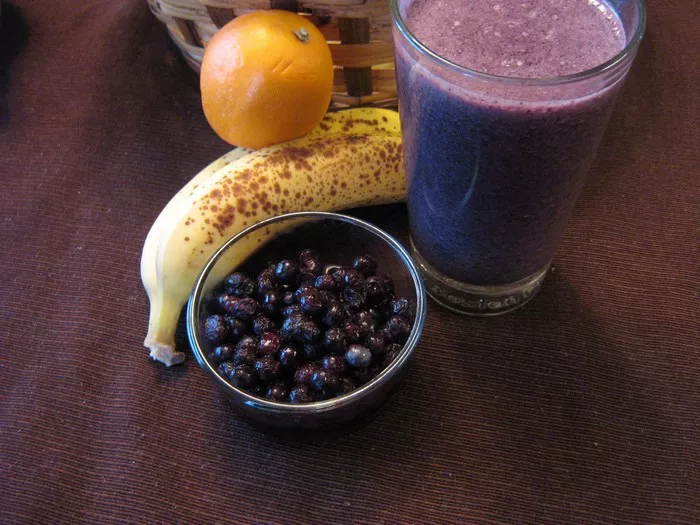In a world filled with a plethora of diet trends and fads, the clean eating diet plan has emerged as a popular approach that many people turn to in their pursuit of better health, increased energy, and improved overall well-being. It goes beyond just losing weight; it’s about nourishing the body with the purest and most nutrient-dense foods available. However, the concept of clean eating can be somewhat nebulous, as different people may interpret it in various ways. In this comprehensive essay, we will explore in great detail what the clean eating diet plan truly entails, delving into its origins, core principles, the types of foods it encompasses, its potential benefits for health, and how to effectively implement it in daily life while also addressing some of the common misconceptions and challenges associated with it.
Origins and Background of Clean Eating
Tracing Its Roots: The idea of clean eating has been around for decades, although it has gained significant traction in recent years. Its roots can be traced back to a growing awareness of the impact of processed foods on health. As the food industry expanded and processed convenience foods became more prevalent in the Western diet, people started noticing the correlation between consuming these highly processed items and various health issues such as obesity, diabetes, heart disease, and digestive problems. Clean eating emerged as a reaction to this trend, advocating for a return to a more natural, whole-food-based way of eating that our ancestors might have followed.
Influences from Different Diet Cultures: It also draws inspiration from various traditional diet cultures around the world that have long emphasized the consumption of fresh, unprocessed ingredients. For example, the Mediterranean diet, known for its focus on fruits, vegetables, whole grains, lean proteins like fish and poultry, and healthy fats such as olive oil, has elements that align with clean eating principles. Similarly, many Asian cuisines that incorporate a wide variety of fresh vegetables, lean proteins like tofu and fish, and minimally processed grains like brown rice and quinoa can be seen as precursors to the clean eating concept. Over time, these ideas merged and evolved into what we now recognize as the clean eating diet plan.
Emphasis on Whole, Unprocessed Foods
Understanding Whole Foods: Whole foods are those that are in their natural state or have undergone minimal processing. This means choosing foods like fresh fruits and vegetables, whole grains, nuts, seeds, and lean proteins. For example, an apple straight from the tree is a whole food, while apple sauce that has added sugars and preservatives is considered processed. Whole foods are rich in a variety of nutrients, including vitamins, minerals, fiber, and phytonutrients, which work together in synergy to support health. When we eat an orange, we get vitamin C, fiber, and other beneficial compounds that are naturally present in the fruit, and these elements help with everything from immune function to digestion.
Avoiding Processed Foods: Processed foods are generally those that have been altered from their original state through methods such as canning, freezing with added preservatives, or having artificial ingredients added. This includes items like packaged snacks with long lists of unrecognizable ingredients, many breakfast cereals with high amounts of added sugar and artificial flavors, and processed meats that often contain added nitrates and sodium. Clean eating encourages avoiding these processed foods as they can disrupt the body’s normal functioning, lead to blood sugar imbalances, and contribute to inflammation and other health problems.
Choosing High-Quality, Nutrient-Dense Ingredients
Nutrient Density Defined: Nutrient density refers to the amount of nutrients a food provides relative to its calorie content. Clean eating focuses on foods that are high in nutrients per calorie. For instance, leafy green vegetables like spinach and kale are excellent examples of nutrient-dense foods. They are low in calories but packed with vitamins (such as vitamin A, C, K), minerals (like iron, calcium), and antioxidants. A cup of cooked spinach contains only about 41 calories but provides a significant amount of iron, which is essential for oxygen transport in the body, along with other vital nutrients. Berries are another great example; they are rich in antioxidants that help protect the body from oxidative damage, yet are relatively low in calories compared to many other fruits.
Prioritizing Quality: In addition to nutrient density, the quality of ingredients matters. This means opting for organic produce when possible to reduce exposure to pesticides and other chemicals. For proteins, choosing grass-fed beef, free-range poultry, and wild-caught fish can provide a better nutritional profile, as these sources may have higher levels of healthy fats like omega-3 fatty acids and fewer antibiotics or hormones compared to conventionally raised animals. When it comes to grains, selecting whole grains like brown rice, quinoa, and whole wheat over refined grains ensures that we’re getting the full range of nutrients that grains have to offer.
Hydration and the Role of Fluids
Importance of Adequate Hydration: Water is essential for numerous bodily functions, including digestion, nutrient absorption, circulation, and temperature regulation. In the context of clean eating, staying hydrated is emphasized as it helps the body process the nutrients from the whole foods we consume. It also plays a role in maintaining healthy skin, joints, and other tissues. The goal is to drink plenty of water throughout the day, aiming for at least 8 glasses (about 2 liters) for the average adult, although individual needs may vary depending on factors like activity level, climate, and body size.
Incorporating Nutritious Fluids: In addition to plain water, clean eating allows for the consumption of certain other fluids that offer additional health benefits. Herbal teas, for example, can be a great choice as they come in a variety of flavors and may have properties like antioxidants (in green tea), calming effects (in chamomile tea), or digestive support (in peppermint tea). Freshly squeezed vegetable and fruit juices (in moderation) can also provide a concentrated source of vitamins and minerals, although it’s important to be mindful of their natural sugar content. Bone broth is another option that can be beneficial for gut health and contains nutrients like collagen, amino acids, and minerals extracted from bones during the cooking process.
Fruits and Vegetables
Fruits: The clean eating diet plan incorporates a wide variety of fruits, with a preference for those that are in season and locally sourced when possible. This not only ensures optimal freshness and flavor but also supports local agriculture. Berries, such as strawberries, blueberries, and raspberries, are highly recommended due to their antioxidant content. Citrus fruits like oranges, lemons, and grapefruits are rich in vitamin C and can be eaten as snacks or used in recipes (such as in salad dressings or smoothies). Apples and pears are good sources of fiber and can be enjoyed on their own or in baked goods made with whole wheat flour and minimal added sugar. Tropical fruits like mangoes and pineapples can add a touch of sweetness and unique flavors to meals but are consumed in moderation due to their relatively higher sugar content.
Vegetables: A diverse range of vegetables is essential in clean eating. Leafy greens like spinach, kale, collard greens, and romaine lettuce form the basis of many salads and can also be cooked in dishes like sautéed spinach with garlic or added to soups. Cruciferous vegetables such as broccoli, cauliflower, Brussels sprouts, and cabbage are known for their cancer-fighting properties and can be roasted, steamed, or included in stir-fries. Root vegetables like carrots, sweet potatoes, and beets are rich in vitamins, minerals, and complex carbohydrates and can be baked, mashed, or used as a side dish. Colorful bell peppers, tomatoes, cucumbers, and zucchini are great for adding freshness and crunch to meals and can be eaten raw in salads or cooked in various ways.
Conclusion
The clean eating diet plan is a lifestyle choice that promotes the consumption of whole, unprocessed foods, rich in nutrients and minimally altered from their natural state. By focusing on a variety of fruits, vegetables, lean proteins, and whole grains, individuals can improve their health, support weight loss, and enhance their overall well-being. It’s crucial to approach clean eating with flexibility and to prioritize sustainability and personal health goals.
Related Topics:



























